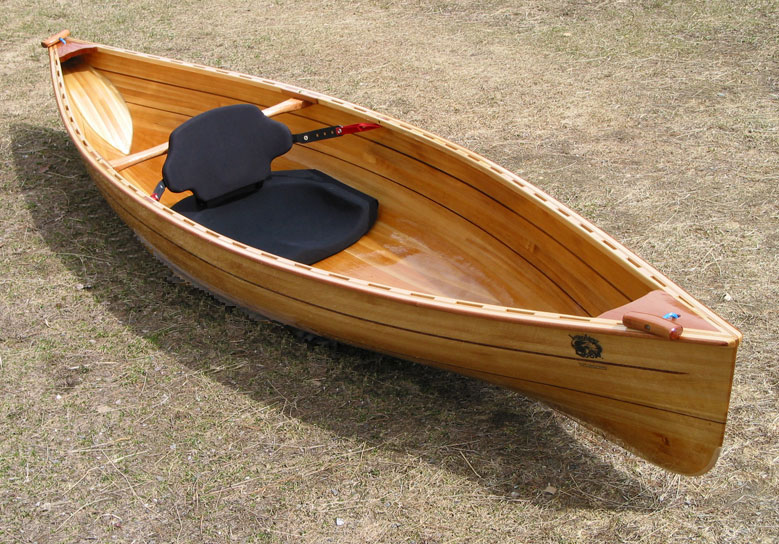
DIY Wooden Canoe Construction: How to Choose the Right Wood
Building your own wooden canoe is a labor of love, a journey that takes you from raw wood to a graceful, elegant watercraft. But before you dive in, you need to make a crucial decision: choosing the right wood. This choice affects everything from the canoe's weight, strength, and durability to its beauty and how it feels to paddle.
Factors to Consider When Choosing Wood
Choosing the right wood for your canoe is a bit like picking the perfect ingredient for your favorite dish. There are many options, each with its own unique flavor and texture. Here are some factors to keep in mind:
1. Type of Canoe
Different canoe types have different needs. For example, a lightweight canoe for solo paddling on calm waters might benefit from cedar, while a heavy-duty canoe for carrying loads and tackling whitewater might be better suited for spruce or oak.
2. Weight and Strength
The wood you choose will directly impact the weight and strength of your canoe. Cedar is known for its lightweight properties, while oak and spruce are known for their strength and durability.
3. Grain Pattern and Appearance
Wood grain patterns contribute to the aesthetic appeal of a canoe. Some woods, like cherry and mahogany, have vibrant hues and intricate grain patterns that can add elegance to your build.
4. Workability and Resistance to Rot
Some woods are easier to work with than others. Some are more resistant to rot and decay, especially important for canoes that will be exposed to moisture.
5. Cost
Wood prices vary widely, depending on the species, quality, and availability. Consider your budget and the value you place on different wood characteristics.
Popular Wood Choices for Canoe Building
Now that you understand the key factors, let's delve into some of the most popular wood choices for building canoes:
1. Cedar
- Pros: Lightweight, aromatic, beautiful grain patterns, naturally resistant to rot, relatively easy to work with.
- Cons: Can be expensive, susceptible to denting and scratches.
- Best for: Lightweight canoes for solo paddling, recreational use.
2. Spruce
- Pros: Strong, durable, lightweight, easy to work with, affordable.
- Cons: Can be susceptible to warping, less resistant to rot than cedar.
- Best for: All-around canoes, especially for larger or heavier loads.
3. Oak
- Pros: Extremely strong and durable, rot-resistant, beautiful grain patterns.
- Cons: Heavy, difficult to work with, expensive.
- Best for: Heavy-duty canoes, whitewater canoes, or canoes used in harsh conditions.
4. Pine
- Pros: Lightweight, affordable, easy to work with.
- Cons: Not as strong as spruce or oak, susceptible to rot.
- Best for: Simple canoes, beginner projects.
5. Cherry
- Pros: Beautiful grain patterns, rich color, durable.
- Cons: Expensive, can be difficult to work with.
- Best for: Showpiece canoes, where appearance is a priority.
6. Mahogany
- Pros: Striking reddish-brown color, beautiful grain patterns, durable.
- Cons: Expensive, can be difficult to work with.
- Best for: Luxury canoes, where aesthetics and quality are paramount.
Choosing the Right Wood for Your Project
Once you understand the characteristics of each wood type, you can start narrowing down your choices. Here are some questions to ask yourself:
1. What type of canoe are you building?
A lightweight canoe for solo paddling? A heavy-duty canoe for whitewater? This will influence your choice of wood.
2. What is your budget?
Woods like cedar and mahogany can be pricey. You may want to consider more affordable options like spruce or pine, especially if you're a beginner.
3. What level of experience do you have with woodworking?
Certain woods, like oak, can be difficult to work with. If you're new to canoe building, you might want to start with a softer wood like cedar or spruce.
4. What is your desired aesthetic?
If you're looking for a sleek, elegant canoe, you might choose cherry or mahogany. If you're after a more rustic look, pine or cedar would be good choices.
Tips for Buying Wood
Once you've chosen your wood, it's time to buy it. Here are a few tips:
- Buy from a reputable supplier: Ensure the wood is properly kiln-dried and free of defects.
- Inspect the wood carefully: Look for knots, cracks, and other imperfections.
- Consider the thickness and width: Make sure you buy enough wood to cover the entire canoe frame.
- Purchase extra wood: You may need extra wood for mistakes or adjustments during construction.
Conclusion
Choosing the right wood for your DIY wooden canoe is a crucial step in the building process. By considering the factors discussed above, you can select the wood that best suits your needs and preferences. This will ensure your canoe is not only beautiful and functional but also durable and long-lasting, offering countless hours of enjoyment on the water for years to come.








No comments:
Post a Comment
Note: Only a member of this blog may post a comment.